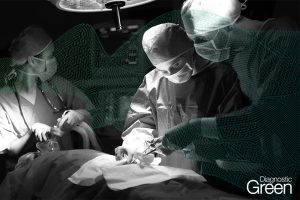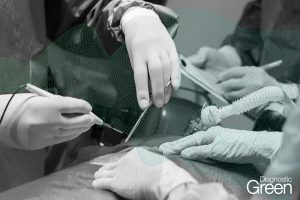Objectives: To assess the feasibility of ICG-NIRF imaging technology in evaluating testicular blood supply during pediatric testicular torsion surgery and guiding intraoperative surgical decision-making.
Methods: A retrospective study was performed on patients diagnosed with testicular torsion and treated surgically at our hospital between January and September 2024. ICG-NIRF imaging was utilized intraoperatively to assess testicular blood flow and guide the decision on testicular preservation. The clinical data we collected included age, symptom onset time, rotation of torsion, coloration grade of torsional testis, ICG fluorescence time of torsional testis, fluorescence pattern classification, surgical methods, complications, and histopathology. Torsional testes were classified into six grades based on color. Fluorescence patterns were classified into three types (A, B, and C), and further refined this classification standard and divided type C into C1, C2, and C3. Follow-ups were conducted at 1 and 3 months postoperatively. Grayscale ultrasound assessed testicular volume and echotexture bilaterally, while Color Doppler flow imaging (CDFI) evaluated blood flow.
Results: 15 patients were included in this study, with a median age of 12.7 years (range: 4.3-15.1 years). The median symptom onset time was 10 hours (range: 0.5-48 hours). The median rotation of torsion was 360° (range: 180°-720°). The median ICG fluorescence time of torsional testis was 22.5 seconds (range: 18-30 seconds). The median coloration grade of torsional testis was 3 (range: 2-6).Intraoperatively, ICG fluorescence was detected in 10 torsional testes, while 5 showed no fluorescence signal. 7 cases exhibited type A fluorescence, 3 cases type B, and 5 cases type C. ICG fluorescence was observed in the tunica albuginea or parenchyma (Type A & B) in 10 patients following intravenous injection, leading to testicular preservation and fixation. Among the 5 patients with Type C fluorescence, 2 (Type C1) showed no enhancement of the tunica albuginea or parenchyma within 2 minutes of ICG injection, but fluorescence leakage was observed after incising the tunica albuginea and parenchyma, warranting testicular preservation. The remaining 3 patients showed no ICG enhancement, upon incising the tunica albuginea and parenchyma, bleeding was observed in one case, while 2 did not. However, none of the three cases exhibited fluorescence leakage (Type C2 & C3). Consequently, orchiectomy was performed in all three cases. Histopathological examination confirmed extensive hemorrhage and necrosis of the testicular tissue. Postoperative recovery was uneventful. One-month follow-up revealed uniform testicular echotexture on grayscale ultrasound in 11 of 12 orchiopexy patients, while one patient exhibited uneven echoes. CDFI showed normal intratesticular blood flow in 10 patients, while two exhibited reduced blood flow. At three-month follow-up, 11 of 12 orchiopexy patients had uniform testicular echotexture on grayscale ultrasound. One patient developed an upper pole cyst. CDFI confirmed normal blood flow in all 12 cases. Statistical analysis revealed a significant difference between the preoperative contralateral testicular volume and the torsional testicular volume at one month postoperatively (P = 0.048) and at three months postoperatively (P=0.002). However, no significant difference was observed between the one-month and three-month postoperative volumes (P=0.138).
Conclusions: ICG-NIRF imaging effectively assesses intraoperative testicular perfusion in torsion cases, aids in surgical decision-making regarding testicular preservation, and predicts postoperative outcomes.




